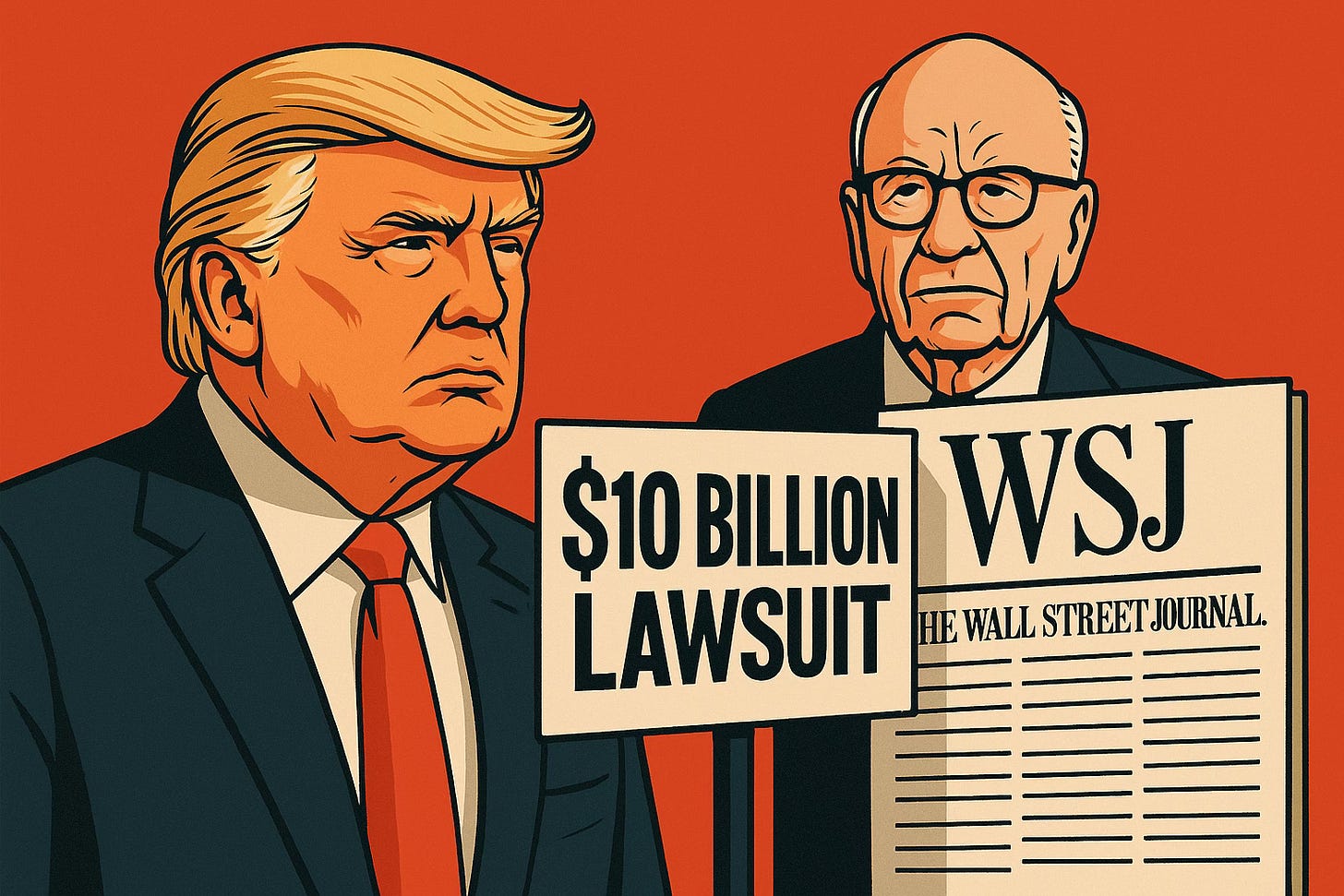Trump’s $10 Billion Lawsuit Against WSJ and Murdoch: PR Strike or Legal Slam Dunk?
By Rafael Benavente
🔎 Trump’s $10 Billion Lawsuit Against WSJ and Murdoch: PR Strike or Legal Slam Dunk?
In what is becoming a recurring theme in Donald Trump’s post-presidency playbook, the former president filed a $10 billion defamation lawsuit against The Wall Street Journal, its parent company News Corp, and media mogul Rupert Murdoch. The suit stems from a controversial article suggesting Trump once sent a lewd birthday letter to Jeffrey Epstein—a claim Trump calls “pure fiction” and “malicious character assassination.”
But beyond the explosive headline and astronomical damages claim lies a deeper question: What is this lawsuit really about, and how will it end?
🎯 The Objective: Not Just Legal — But Political
Trump’s lawsuit is a classic example of a dual-purpose legal strike:
1. Reputation Management
The Epstein connection has long been a vulnerability for Trump. While he has downplayed the relationship, stories like this threaten to undermine his denials and rekindle public suspicion—especially during a presidential campaign.
By filing suit, Trump sends a signal that he won’t let media narratives go unchallenged.
2. Media Intimidation & Narrative Control
This isn’t the first time Trump has sued major networks. He’s previously filed suits against CNN, ABC, CBS/Paramount, and even won settlements from ABC and Paramount totaling over $30 million combined—albeit quietly.
Each suit serves as a warning to media companies: publishing controversial or speculative stories about Trump may come with a financial cost.
3. Political Theater
Finally, the lawsuit adds fuel to Trump’s “war against fake news” narrative. For supporters, it’s another example of Trump standing up to elite institutions. Whether or not he wins, the filing alone becomes a campaign asset.
⚖️ The Legal Landscape: A Steep Uphill Climb
While the headlines are dramatic, the legal case faces formidable hurdles.
📌 Public Figure Standard
Under U.S. defamation law, public figures like Trump must prove “actual malice”: that the journalist or publisher knew the information was false or recklessly disregarded the truth.
This is a high bar, and most similar cases never reach trial.
📂 The Risk of Discovery
If the case does proceed past early dismissal stages, the WSJ could be forced into discovery, where internal emails, drafts, and sources may be subpoenaed. But that sword cuts both ways: Trump could also be compelled to testify under oathabout his relationship with Epstein—something he may want to avoid.
💰 What Is Trump Really After?
The lawsuit demands $10 billion in damages—an eye-popping figure that’s almost certainly symbolic. Legal analysts agree this number is not rooted in precedent or provable damages.
More Realistic Outcome:
Dismissal: The most likely outcome. Courts routinely throw out defamation suits by public figures unless clear evidence of malice exists.
Modest Settlement: If there’s any ambiguity in WSJ’s sourcing, Trump could extract a settlement in the $1–5 million range—as he did with ABC and Paramount.
PR Win, Legal Loss: Even if Trump loses the case, he may win politically by using the lawsuit to reinforce his victim narrative.
📊 Comparing Recent Trump Settlements
🔍 Final Word: What This Case Is Really About
This lawsuit is less about winning in court, and more about winning in the court of public opinion. Trump is using defamation law as a tool for strategic communication, not just restitution.
While the odds of a $10 billion payday are essentially zero, the lawsuit:
Creates headlines,
Pressures media outlets to tread more carefully,
And fires up Trump’s political base in an election year.
In the end, don’t expect a courtroom climax—expect a PR victory, a possible quiet payout, and another notch in the belt of Trump’s war on mainstream media.
By Rafael Benavente


